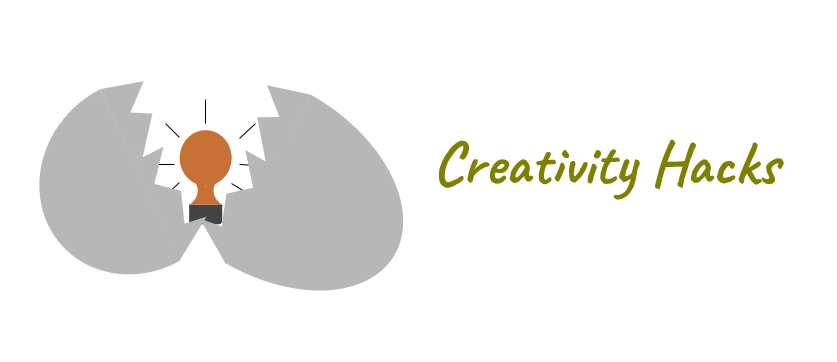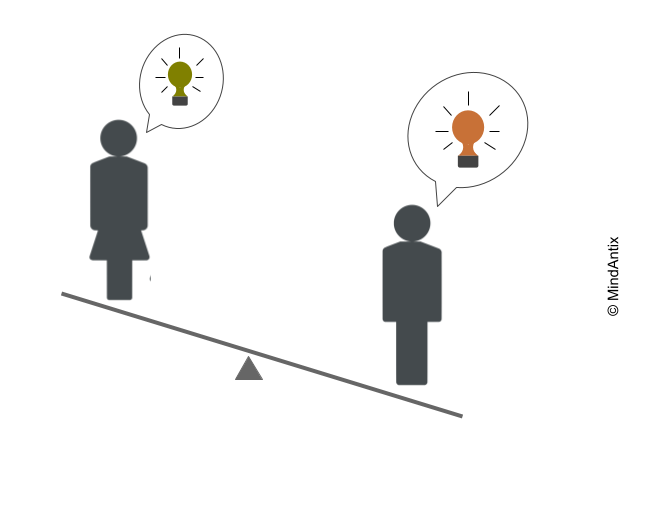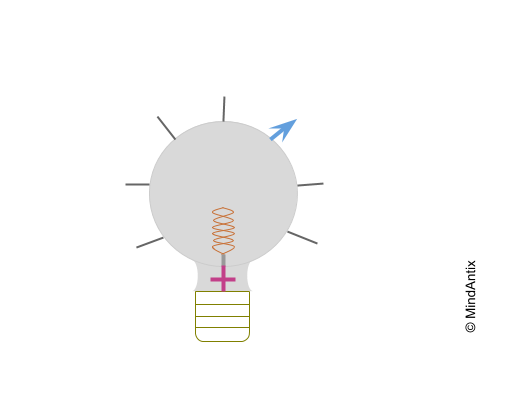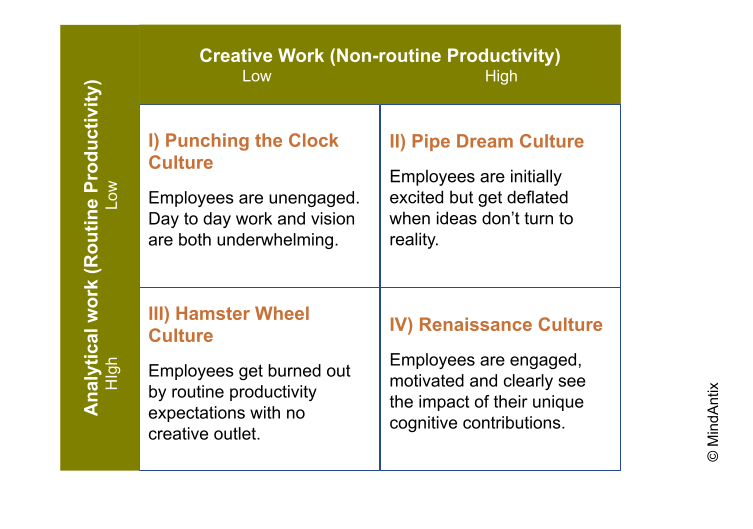When it comes to brainstorming, most groups fall prey to cognitive biases that reduce overall group creativity. People get so invested in their own ideas that they might overlook obvious downsides. Or they might get swayed by others’ opinions especially when the others have some kind of authority. Two common cognitive biases in group decision making are myside and one-sided thinking. Myside bias occurs because people are more inclined to reason in ways that support their opinion or idea while ignoring or minimizing contradictory viewpoints. One-sided thinking is our preference for arguments that are one-sided rather than those that offer multiple perspectives.
It’s easy to see why these biases occur frequently and why they lead to flawed decisions. Due to myside bias, people tend to only offer arguments that support their idea in any discussion. Due to one-sided thinking bias, people are more easily swayed by a person who presents one-sided arguments than someone who presents a more nuanced view that considers multiple perspectives. A one-sided solution appears simpler and cleaner, and because it causes less cognitive strain, it becomes more persuasive. These biases are not correlated with measures of cognitive ability like IQ – intelligent people are just as prone to them as others.
About The Build, Tear Down, Rebuild (BTR) Hack To Reduce Groupthink
A structured approach to brainstorming and group discussions can eliminate the effect of these biases. Using the Build, Tear down, Rebuild (BTR, pronounced better) technique described below, teams can arrive at more unbiased and intelligent decisions. Here is one way to run a BTR session:
- Prior to the group session, ask team members to send their ideas to you privately (nominal brainstorming), which helps build independence of thought.
- At the start of the group meeting set expectations that the goal of the exercise is to make each idea the best version of itself. This shifts the tone in the group from competitive to collaborative.
- Take one idea at a time and have the group discuss the following aspects (use a whiteboard to capture all information in a table format). By asking the following questions, you first build up an idea (pros), then tear it down (cons) and then rebuild (mitigations) it again to arrive at a superior version of the initial idea.
- Pros: What are the advantages of this idea?
- Cons: What are some drawbacks of the idea?
- Mitigations: Are there some ways to mitigate the cons by changing something about the idea?
- After all ideas have been thoroughly discussed, have the group look at all ideas together to see if different ideas can be combined to give a better solution overall. This step tends to happen organically as the discussion progresses, so leaders may not need to ask explicitly.
- After the meeting, send the information captured to meeting attendees and ask them to reflect some more. This step gives an additional incubation time for new insights to emerge.
The building up phase (finding pros) helps to expand the potential of the idea. The original proposer may have missed some aspects that others identify. The tear down phase (identifying cons) helps identify current limitations or boundaries where the idea will work and not work, and starts to shrink the potential of the idea. Finally, the third phase (finding mitigations) tweaks the idea so that some of the limitations are overcome. It re-expands the idea and places it in a more realistic zone.
Summary
Finally, here is a quick summary of the creativity hack and how to use it.
| Description | During brainstorming, ensure that all ideas are thoroughly discussed to avoid any biases. For each idea, first identify the pros of the idea, then follow up with current cons and finally ask the group to think of ways to mitigate the cons. This allows any idea to arrive at its best, yet practical, version. |
| Example | Here is a simple example (from an elementary aged student) whose idea was to improve a toothbrush by adding a 2-minute song as a timer. The obvious advantage is that it helps kids keep track of the right amount of time to brush their teeth. One con is that listening to the same song every time could become boring quickly. So a mitigation could be to have multiple songs that rotate at random. Another solution is to have the songs in a different language so kids can learn a new language at the same time. |
| Tips | – To increase idea output, ask team members to think of their ideas beforehand. – To further reduce groupthink, collect all the ideas before the start of the meeting and discuss each idea anonymously (without sharing who suggested the idea) |
| Extensions | This technique can be used not just in brainstorming but also in any kind of group decision making, where there are several possible solutions each with their own advantages, disadvantages and constraints. |




